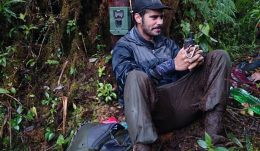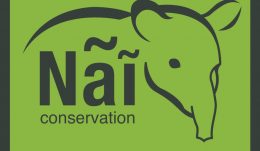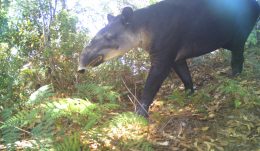
Esteban Brenes-Mora
- Project name: Factors affecting habitat use of Baird’s Tapir in a road-fragmented PA in Cordillera de Talamanca.
- Project site: Cordillera de Talamanca, Costa Rica
- EDGE species: Baird’s tapir Tapirus bairdii
- Active: 2015 - 2017
Biography
Esteban is a Conservation Biologist from Costa Rica who specializes in population ecology, statistical modeling, and lobbing for the inclusion of scientific evidence into decision making. He has spent the last two-years of his EDGE Fellowship putting his knowledge and experience into practice by establishing a long term monitoring and conservation programme for Baird’s tapir in Central America.
He has learnt novel research methods and improved his community engagement skills through the EDGE Fellowship and has even developed his own organization, Nai Conservation, a group focused on tapir ecology and conservation in Costa Rica. He is also a IUCN’s Tapir Specialist Group Member, and conservation associate for Global Wildlife Conservation.
Being an EDGE Fellow allowed Esteban to fulfil his childhood dream of studying and conserving his favourite animal, Baird’s tapir. In 2017 Esteban became one of the first EDGE Affiliates.
EDGE Project
Esteban aims to provide quantitative information on the population status and ecology of Baird’s Tapir in the highlands Cordillera de Talamanca, Costa Rica. The results will inform the government’s road mitigation plans. Esteban plans to achieve this by:
- Estimating population density in a landscape fragmented by roads using camera traps
- Determining the most important environmental and disturbance variables influencing tapir distribution
- Identifying zones where road mitigations should be implemented
- Raising awareness and involving local communities in the conservation of Baird’s tapirs
Achievements
- Developed a partnership with a Costa Rican chocolate company
- Established his own conservation organisation Nai
- Awarded an internship at the Institute of Zoology (ZSL) from the Student Student Conference on Conservation Science
Project Gallery


